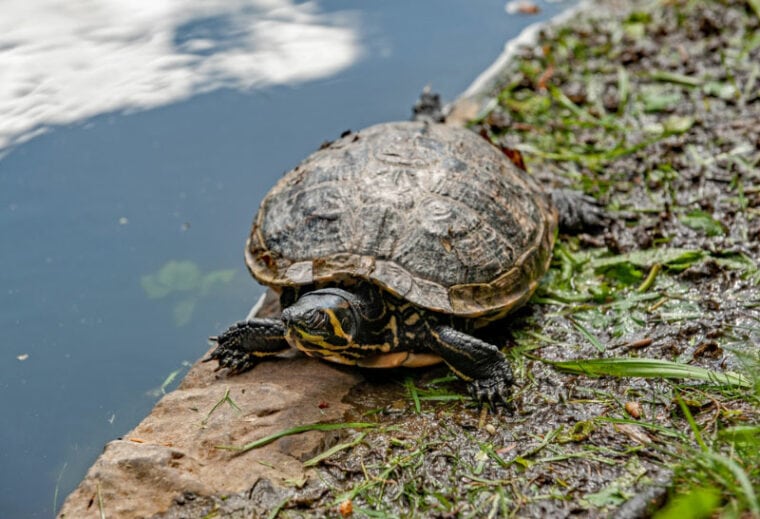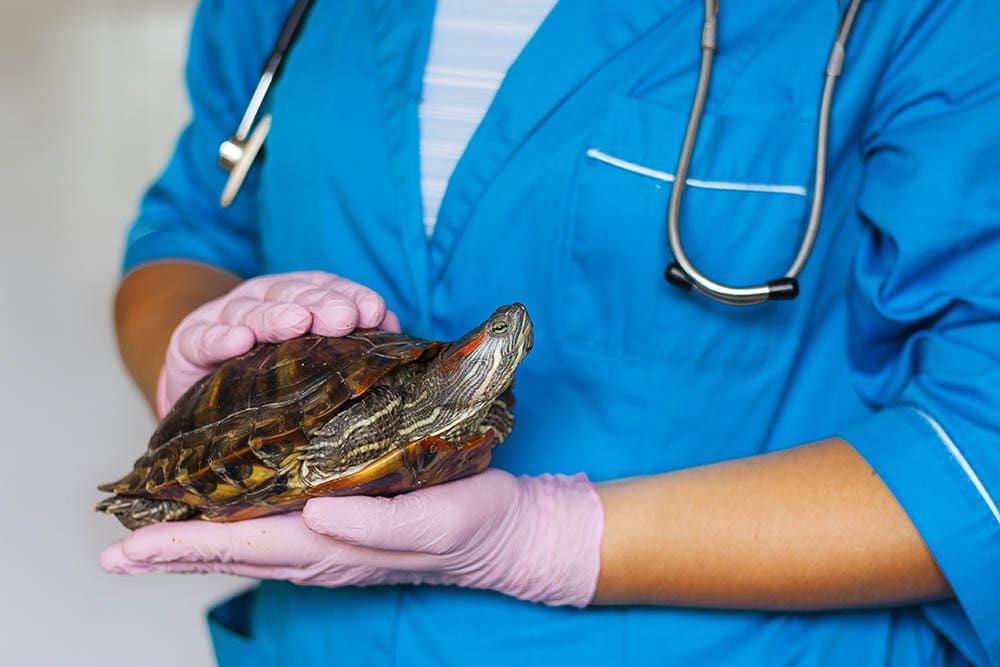
Observing a turtle’s behavior as they paddle around the water and forage for food can be both fascinating and entertaining. Turtles have an uncanny ability to stay utterly still, but this doesn’t always mean they’re sleeping.
For most turtles, a secluded spot at the right temperature is as good a place as any to rest their weary little heads. Usually, they’ll withdraw into their shell for protection while they snooze, but not always! All in all, it can be difficult to tell whether your chelonian buddy is sleeping or just chilling, and that’s partly because their sleep is so different from ours.
In this article, we’ll take a deep dive into turtle resting behavior!
Do Turtles Sleep?
When turtles sleep, they are actually going into a period of rest where their metabolism temporarily slows to even lower levels than usual. The lower temperatures in the water help aquatic turtles with this, which in turn means the turtles need less oxygen than usual, allowing them to stay beneath the surface for longer periods. However, aquatic turtles can and do sleep outside the water as well.
Turtles have two forms of sleep:

Do Turtles Sleep in Water?
Aquatic turtles can and do sleep in water! They can sleep by floating around at the top of the tank, with their head just poking out from the surface for air, but they can also sleep below the surface, sometimes for hours at a time! Equally, turtles may prefer to find a safe spot on a dry rock where they can rest for a few hours.
How Long Do Turtles Sleep For?
Turtles are diurnal, which means they are more active during the day, and less active at night. Turtles sleep around 8-10 hours per night (depending on the species), and though their heart rate may drop as low as six beats per minute during deep sleep, aquatic turtles resting in water may still surface to breathe on occasion.
Sleep cycles will differ from one turtle to another and can be affected by various environmental factors. Your turtles rely on natural lighting to help regulate their sleep cycles in the natural world; therefore, you should try to mimic this for them in captivity, too. Your turtle should get around 12 hours of light and 12 hours of darkness each day.
All turtle species have a POTZ (preferred optimal temperature zone). This is a temperature range in which your pet is most comfortable. For example, if you have a red-eared slider, their enclosure should be maintained between 22–27 °C (72–81 °F). The temperature of their basking spot should be approximately 32 °C (around 90 °F), whereas nighttime temperatures should not fall below 17 °C (63 °F).
Nighttime temperatures are important because they should not drop excessively low, as this may trigger increasingly low metabolic rates in pet turtles and the onset of brumation (which is a near-hibernation-like state).

Do Turtles Sleep in Their Shells?
Most turtles retreat into their shells when they are sleeping. This is a self-preservation instinct that keeps them safe from predators as they rest, though their relaxed limbs may slightly protrude from their shells during periods of quiet sleep. Turtles do not actively swim while asleep.
Conclusion
Pet turtles mostly sleep at night, though they can sleep during the day too. Depending on their species, they may sleep under the water, floating at the top of the tank, or on a dry surface. Most likely, you’ll find your pet turtle resting with their limbs retracted and their head hidden inside its shell (but slightly relaxed) in a quiet corner where they want to reap the benefits of a sleep session!
Featured Image Credit: CTatiana, Shutterstock








